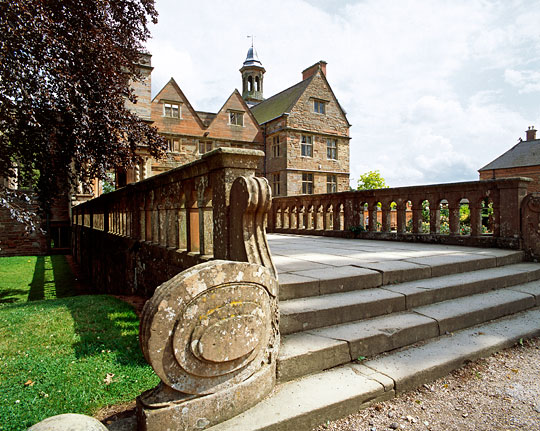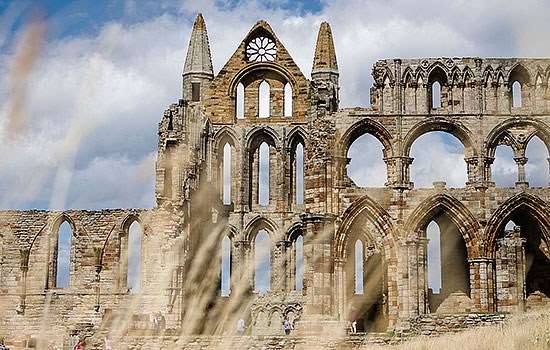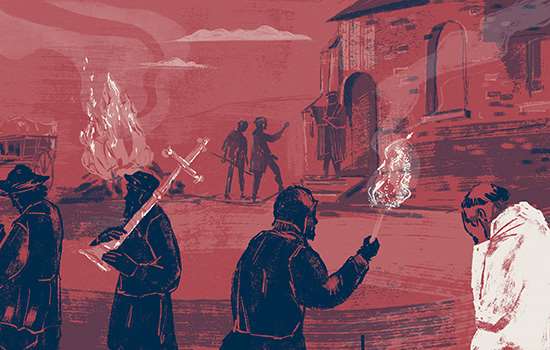History of Rufford Abbey
In 1146 Gilbert de Gaunt, Earl of Lincoln, founded the Cistercian abbey of St Mary the Virgin. The monks of this order, also known as the ‘white monks’ because of their habits of undyed wool, believed in the value of an austere life based upon prayer and hard work. Rufford Abbey was moderately wealthy and able to sustain a community of monks between its completion in about 1170 and its suppression in 1536.

Rufford was one of the first abbeys in England to be affected by the Suppression of the Monasteries, and the whole estate was quickly acquired by George Talbot, 4th Earl of Shrewsbury.
The conversion of the west range of monastic buildings into a house (1560–90) was undertaken by the sixth earl, who was the fourth and final husband of the indomitable Bess of Hardwick, from whom he was then bitterly estranged.
In 1610, a new projecting wing was added to the northern end of this range.
The estate was inherited in 1626 by Mary Talbot, sister of the 7th and 8h Earls of Shrewsbury, and it passed to her husband, George Savile.
The Savile Family
William Savile, George’s successor, made Rufford Abbey the seat of the Savile family after he burnt down the Saviles’ original home in order to prevent its being occupied by a Parliamentarian garrison during the Civil War.
In 1679, the Savile family constructed a new north wing on the site of the abbey church, containing reception rooms and a long gallery. They also built the large stable block to the right of the house. The surviving roofed southern service wing (currently used as offices) was also added by the Saviles in the 17th century.
In 1938, the 3rd Baron Savile inherited the Rufford estate as a minor, but his trustees split it into lots and sold it off.
The 20th Century
The abbey and park were bought by Nottinghamshire County Council in 1952, and the north and east wings were demolished in 1956. The remaining west range and south service wing were put into the care of the Ministry of Works at the same date.
Description
The abbey is approached from the car park over the 19th-century Jacobean-style bridge.
The roofed porch formed the original main entrance to the Earl of Shrewsbury’s 16th-century house. The inner double doors lead into the now ruined Brick Hall, which formed a grand initial reception room for the post-suppression house. This area of the building originally formed the lay brothers’ dormitory.
Features include a fine late 14th-century window, with a surround of carved heads and foliage and the medieval night stair, which leads down from the ground-floor dormitory to the area of the cellar.
Original Abbey Site
Immediately in front of the night stair is a large area of open lawn – this was the location of the original abbey church and the 1670s northern wing of the house.
To the right is the entrance to the original cellar and monks’ refectory. This cellar, a well-preserved example of Cistercian architecture, is plain with simple rounded and octagonal columns supporting the vaults. Traces of the day stair and of alcoves for holding the linen and spoons for use in the refectory have survived in the front wall.
Further Reading
Anon, Rufford Abbey: Glimpses of the Past (Nottingham, 1994)
McGee, C, and Perkins, J, ‘A study of the Cisterican abbey at Rufford, Nottinghamshire’, in Southwell and Nottinghamshire: Medieval Art, Architecture and Industry, ed JS Alexander (Leeds, 1998), 83–92
Nottinghamshire County Council, History of Rufford (accessed 17 July 2015)
Phillips, AP, ‘The diet of the Savile household in the 17th century’, Transactions of the Thoroton Society of Nottinghamshire, 93 (1960), 57–71
Smith, P, ‘Rufford Abbey and its gardens in the 17th and 18th centuries’, English Heritage Historical Review, 4 (2009), 122–53 (subscription required; accessed 17 July 2015)


